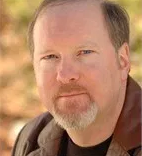Creating My Own American Dream
For the Fourth of July, some reminiscences about how I followed my dreams and never gave up wanting to become a writer.
Recurring Dreams
I was always certain I would be a writer. While friends talked about wanting to become astronauts or firemen or even the President (yes, it was a long time ago), I knew from age five that I wanted to write stories for a living.
Even before I could read or write, I drew pictures on scraps of paper, laid them out on the floor, and told stories aloud to anyone who would listen. I was enamored with science fiction and monster movies. I didn’t care about the cheesy special effects; it all seemed real to me.
By the time Neil Armstrong actually walked on the Moon—I was seven then—I had consumed such a steady diet of sci-fi movies that couldn’t understand why everybody was so captivated by a Moon adventure that didn’t even have monsters. I thought we’d been to the Moon plenty of times: after all, I watched it happen every Saturday afternoon on Sci-fi Cinema.
When I was eight, I decided to try my hand at writing a novel. In the den, my dad had a manual typewriter and a stack of pink paper taken from a scrap pile. I sat down and over the course of several days hunted-and-pecked a three-page opus about a mad scientist who invents an injection that will bring anything to life. He goes to the wax museum and the natural history museum, brings the monster figures and dinosaur skeletons to life, and goes on the usual rampage.
I wrote and rewrote that book for years, expanding it in different directions. By the time I was ten, I had saved up enough of my allowance to buy either my own bicycle or my own typewriter. Even though every other kid I knew had a bike, I decided on a Smith Corona Electric cartridge typewriter, which I used to rewrite that ever-growing novel, The Injection.
As a sophomore in high school, I had to do a history paper on the Black Death in Europe in the 14th century. Rather than doing a boring report though, I chose to write a story about twin boys, one of whom had caught the Bubonic Plague while his brother tried to save him, begging for help from priests, magicians, and nobles in a dark and grim medieval Europe. Yes, I got an “A” but a better grade for me was when my mom read the story and sat in the chair crying her eyes out.
So I sent that story to a magazine…and I got my first rejection slip. I was 12, but I kept writing, kept submitting, even as dozens of rejection slips poured in. My first story was published in a Wisconsin high school writings magazine when I was in 11th grade. I actually got paid for a story—$12.50—by the time I was a senior in high school.
It never occurred to me that I wouldn’t be a writer; it wasn’t my fault the editors couldn’t see that. Among the continuing rejections came encouraging letters, including a very lengthy one from Stan Schmidt, the editor of Analog magazine. I was only 16 at the time, but his advice helped shape me as a writer, and I have since published in his magazine many times.
At one writer’s conference, I received an award naming me the “Writer With No Future,” because I could produce more rejection slips by weight than any other author at the conference. But I didn’t let it bother me. I knew persistence was one of the main ingredients to success. Olympic athletes have to practice and practice every day of their lives for years, and even then they might not make the team. I kept writing, kept getting better, and now I proudly display that “Writer With No Future” trophy in my office right next to my Guinness World Record for the largest single-author book signing and my framed London Sunday Times bestseller list showing one of my novels in the #1 slot.
Never wavering from my American dream, I shaped my life and devoted all my free time around becoming a writer. The stories kept coming into my head and I had to write them just to relieve the pressure. Now, I can say that I “make things up” as a profession…and a very fine profession it is.

